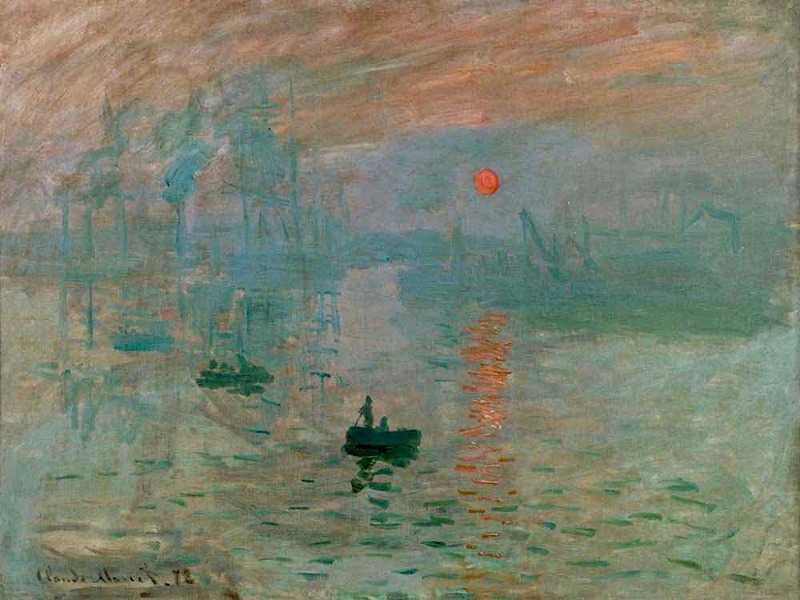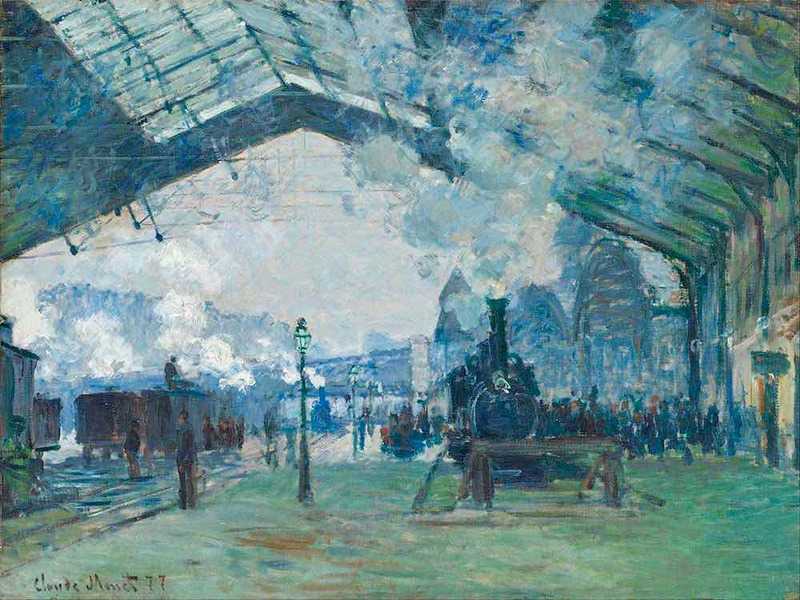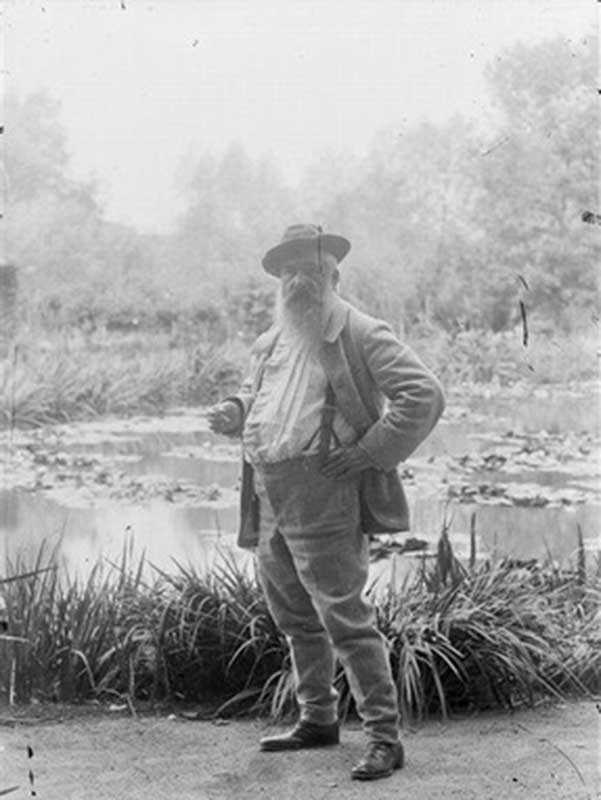1. 10 Interesting Facts
Here's our selection of 10 things you should know about Monet.
(1) He was a child prodigy
Monet was born in Paris in 1840 and grew up in Le Havre. He often played truant from school and liked roaming across the cliffs bordering the English channel. He was also great at drawing cartoons, often of local celebrities. They were so good that Monet sold them for between 10 and 15 francs at a local picture framers' shop.
Interestingly, they were signed Oscar (Monet's full name was Claude-Oscar Monet).
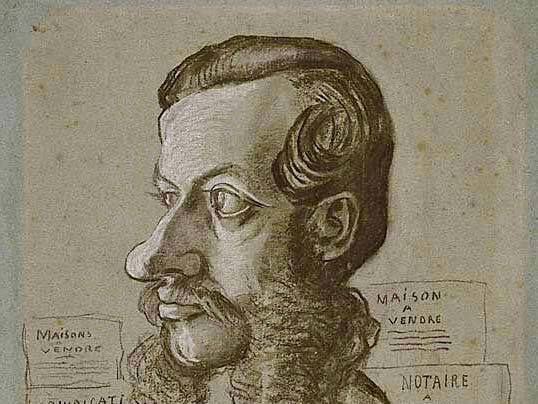
(2) He was a ladies man
The young Monet cut a dashing figure: he was good-looking, gifted, confident and had a way with the ladies.
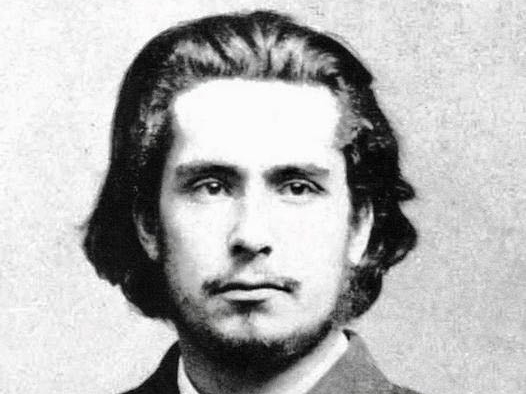
Once, when he was attending a drawing class in Gleyre's studio, he brushed off an unwelcome advance by saying:
“I’m sorry, but I only sleep with duchesses or maids. Anything in between I find revolting. My ideal woman would be a Duchess’ maid!”
(3) He was slated by the critics for decades
Though Monet had the odd early success, the first 20 years of his career were characterised by rejection from the biggest art show going - the Paris Salon - and the acidic pens of art critics.
For example, Monet's submissions were rejected from the Salons held in 1869 and 1870. The rejected works included The Magpie, now regarded as Monet's best snowscape.
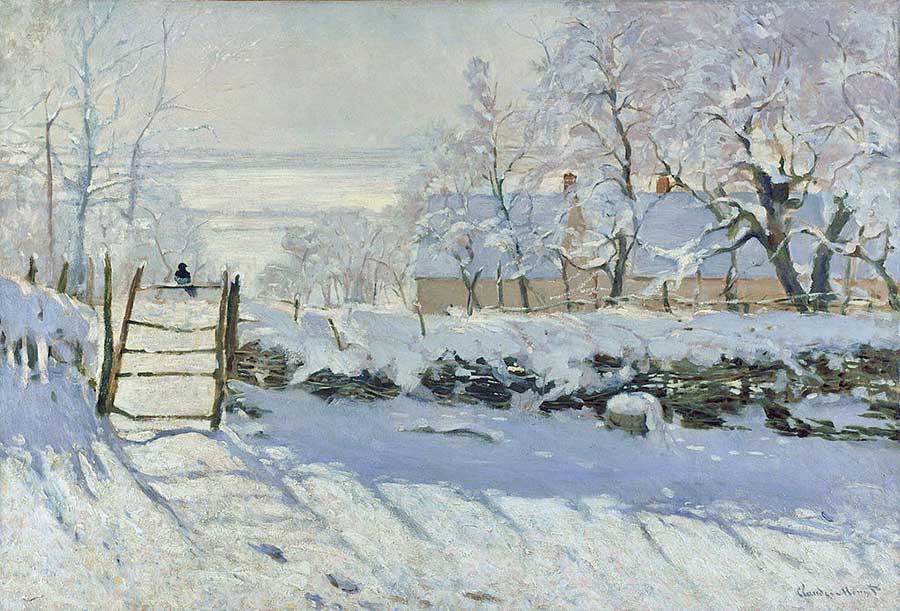
And when the impressionists came to hold their first independent exhibition in 1874, the critics sharpened their knives. Of Monet's Impression: Sunrise, one of the most famous impressionist works today, they said this:
“Impression! Of course. There must be an impression somewhere in it. What freedom ... what flexibility of style. Wallpaper in early stages is more finished than that.”
(4) He was so poor he had to beg for hand-outs
In the 1870s Monet was skint. Penniless. Brassic. And he had art supplies to buy and a wife (Camille) and young child (Jean) to support.
The problem was that he just couldn't sell his works: the aristocrats of the time wanted religious, moral or historical scenes - or portraits of their family - and Monet didn't do any of these things.
So he often took to sending begging letters to his dealer, Paul Durand-Ruel, and his friends (such as Edouard Manet).
In one letter to Manet he said this:
“Things are going worse and worse. Since the day before yesterday, I have not had a penny, and no credit anywhere — not at the butcher’s or baker’s. Could you possibly send me 20 francs by return? It would tide me over for the moment.”
(5) He served in the military and fled a war
The young Claude Monet served in the military, joining the First Regiment of the African Light Cavalry (the Chasseurs d'Afrique) in Algeria in 1861. He underwent basic training, but found military life tiresome. And then he contracted typhoid and was shipped home. This was too much for his fraternal aunt, who paid to have him discharged.
Monet had clearly had enough of military life: at the outbreak of the Franco-Prussian war in 1870, he moved to London with Camille and his baby son.
He therefore sat out the siege of Paris in comparative luxury (whilst some of his impressionist colleagues, such as Manet, defended the capital). Camille Pissarro also fled to London, whilst Paul Cezanne hid in a fishing village in the south of France to avoid being conscripted.
Monet's sojourn in London was important, however. He produced some fantastic work, and more importantly got to know Paul Durand-Ruel - a dealer who became a key supporter of the impressionist group.
Here's Monet's The Thames Below Westminster, painted in 1871:
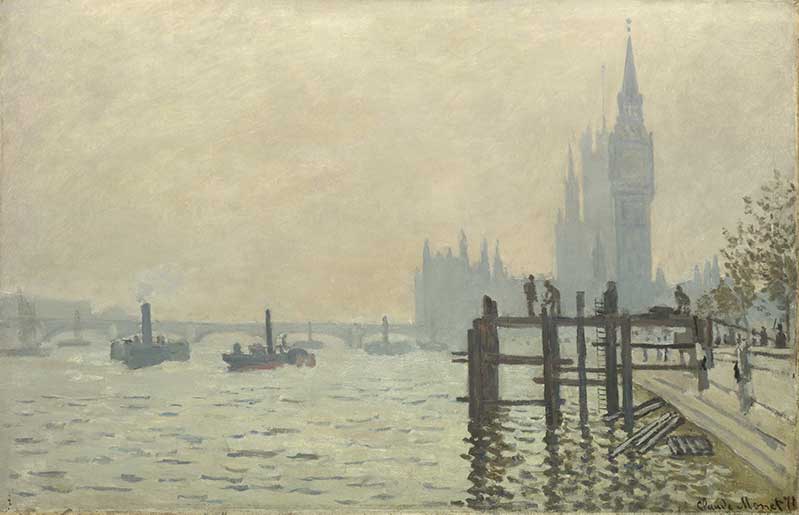
(6) He painted one of his most famous works in a single sitting
We've mentioned Impression: Sunrise already. It really is the most remarkable work:

And this painting was created by Monet, sitting in his room in the Hôtel de l’Amirauté on 13 November 1872, in a single session probably lasting a couple hours. It is apt that Impression: Sunrise is the work that got the impressionists their name.
Monet was not trying to produce a photographic representation of the Le Havre harbour in front of him. He was trying to get down on canvas how it made him feel or, ahem, the impression it made on him.
And he was trying, as with many of his works, to capture the effect of light reflecting off the water - and so he had to get it down on canvas before the sun rose too high and became too bright.
(7) He was a grumpy old man
Monet was, especially in his later years, a great example of a tortured artist.
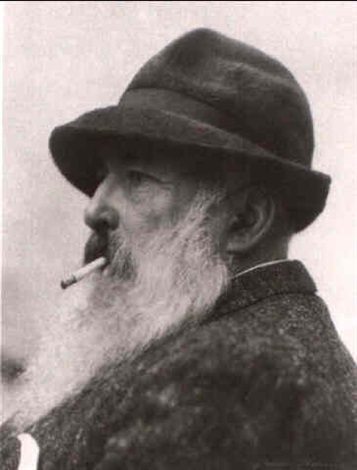
He spent a decade working on his crowning works, the huge water lilies now housed in the Musee de l'Orangerie in Paris. But he couldn't stop tinkering with them, refusing to hand them over to the French state as he had agreed to do. They remained works in progress until his death.
But this was nothing:
- Monet on occasion slashed at his work with a penknife when it wasn't quite right;
- Monet was known to jump up and down on canvasses that he deemed sub-standard; and
- Monet once even lit a bonfire of works that he thought hadn't really come off.
Given that Monet's works now sell for tens of millions of dollars, that was an expensive barbecue!
George Clemenceau, the former French Prime Minister and a friend of Monet's, rebuked him for being so grumpy. On one occasion, after Monet had had successful eye surgery, he wrote:
"It's irritating for you not to be able to complain about your sight after all of your wild lamentations. Fortunately, your work 'gives poor results', and therefore you can whine about that instead, because complaining gives you the greatest joy in life."
(8) He wasn't scared of the Germans
Monet moved to Giverny in 1883, living here until his death in 1925. When the Germans were advancing on Paris in 1914, Monet refused to leave. He said:
"Let them kill me in front of my canvasses"
This was extremely brave as Monet's house was within 60 miles of the front line, many of his neighbours had already fled, and he could hear the pounding of artillery.

Later, Monet took vegetables that he had grown in his Giverny gardens to military hospitals to provide much needed nutrients to recovering soldiers.
(9) He almost lost his sight
In 1912, Monet noticed that his eyesight was deteriorating. He was diagnosed with cataracts but was afraid to have surgery to remove them. Things got slowly worse until 1922 when he was finally persuaded to go under the knife. By this stage, he was medically blind in one eye and had 10% vision in the other.
Though the operations were successful, Monet was a terrible patient: he moaned endlessly and refused to follow his doctor's orders.
Monet's art changed substantially during the 'Cataract Years': it became more abstract and Monet started using the colour red in large quantities. Compare his paintings of the Japanese Footbridge below.
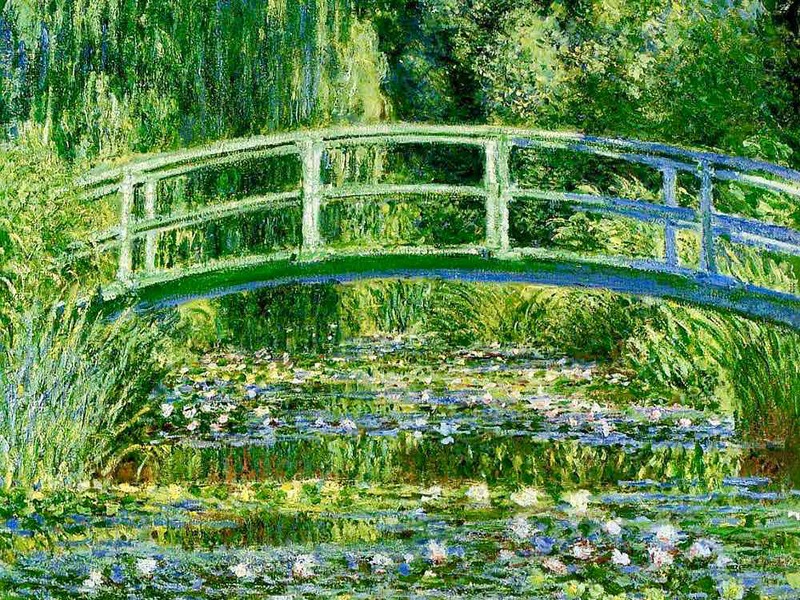
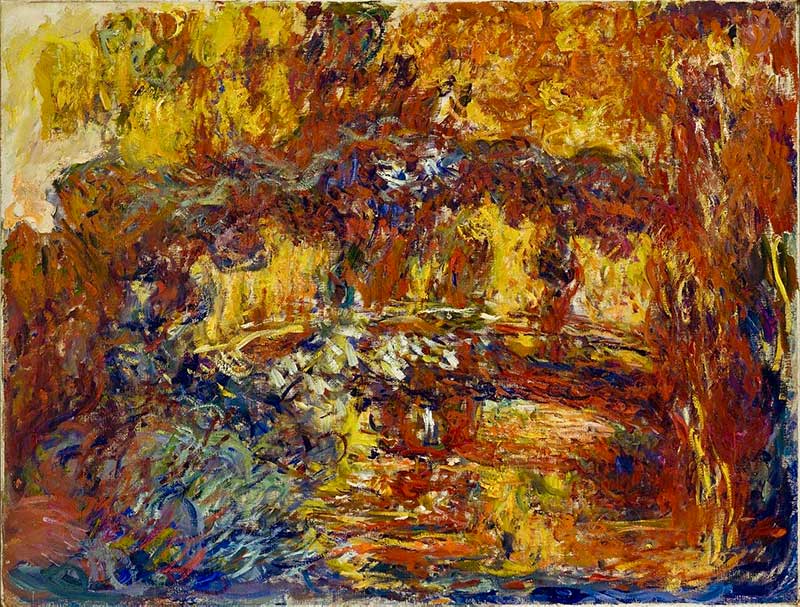
(10) He is now the most famous impressionist
Claude Monet is now the most famous impressionist. This is due to a number of factors:
- The beauty of his paintings, in particular the Water Lilies.
- The fact that Monet lived until 1925, much longer than the other impressionists (Manet, for example, died in 1883).
- The sheer number of canvasses that Monet painted.
By way of example, a Google search for 'Claude Monet' produces 53 million hits and 15 of the 20 most expensive impressionist paintings ever sold were painted by Monet.
2. Learn More
Once you've learned the Top 10 Facts about Monet, why not check out our pages on:
- Monet's life.
- Monet and Giverny.
- Monet's struggles with cataracts.
- Monet's Best 10 Paintings.
More general information about the impressionists can be found on our Top 10 Impressionist Paintings page. And, once you've done your homework, why not test yourself on our Impressionism Quiz page?


